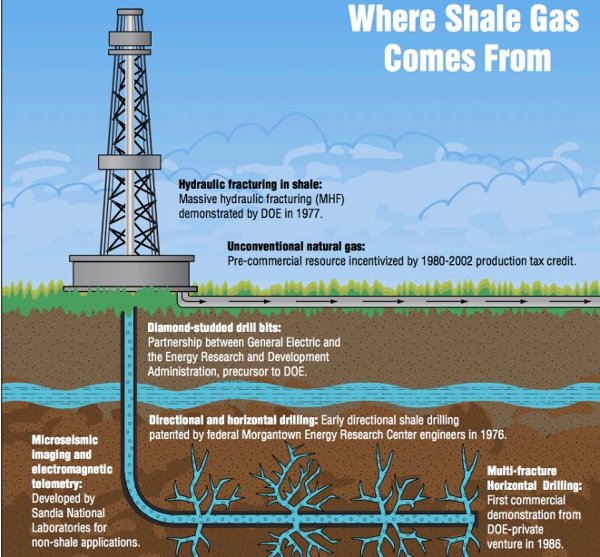The Government's Role in the Development of Fracking

America is in the midst of a natural gas boom, fueled principally by the development of technologies enabling the extraction of large gas reserves trapped in shale formations. Shales now produce over 25 percent of domestic natural gas resources, up from 2 percent in 2001. The shale boom has also pushed natural gas’s contribution to America’s electricity generation portfolio from 20 percent to nearly 30 percent in the last few years alone. Natural gas resources in shale, once thought to be unrecoverable and until this past decade prohibitively expensive to extract on a full commercial scale, are now accessible and abundant. The shale boom has expanded domestic energy production, pushed down wholesale electricity prices to record lows, and accelerated the retirement of America’s aging coal plant fleet, significantly improving public health. These advances were made possible by technological innovations resulting from a sustained partnership between the gas industry and the American federal government.
In a series of investigations and interviews with historians, gas industry executives, engineers, and federal researchers, the Breakthrough Institute uncovered the historical role of the federal government in the development of cost-effective shale gas extraction technologies. We consistently found that innovation and progress in the development of hydraulic fracturing and other key gas recovery technologies arose from public-private research and commercialization efforts. From basic science to applied R&D to technological demonstration to tax policy support and cost-sharing partnerships with private industry, federal programs proved essential to gas industry engineers in figuring out how to map, drill, and recover shale gas – and, most importantly, how to do it cost effectively.
The history of shale gas fracking in the United States was punctuated by the successive developments of massive hydraulic fracturing (MHF), microseismic imaging, horizontal drilling, and other key innovations that when combined made the once unreachable energy resource technically recoverable (see infographic below for details). Along each stage of the innovation pipeline -- from basic research to applied R&D to cost-sharing on demonstration projects to tax policy support for deployment -- public-private partnerships and federal investments helped push hydraulic fracturing in shale into full commercial competitiveness.
Today, next-generation advanced energy technologies -- including wind, solar, advanced batteries, nuclear power, and others -- face many of the same scaling and cost challenges that shale fracking faced in the 1970s and 1980s. But significant progress has been made, and if policymakers use the shale history as a model for a smart and efficient public clean tech investment portfolio, then policy support can accelerate clean tech's march towards subsidy independence and full commercial maturity.
Read the Breakthrough Institute fact sheet, titled "Where the Shale Gas Revolution Came From: Government's Role in the Development of Hydraulic Fracturing in Shale."



